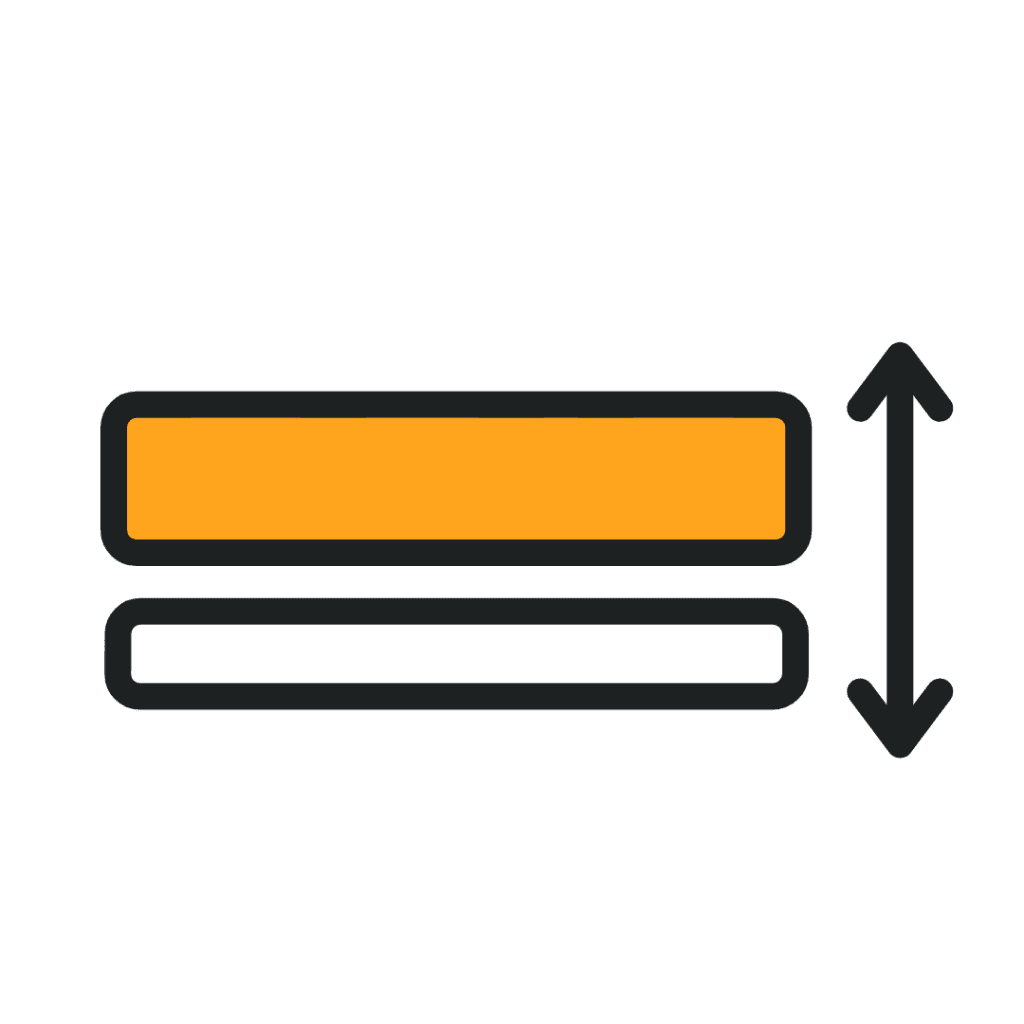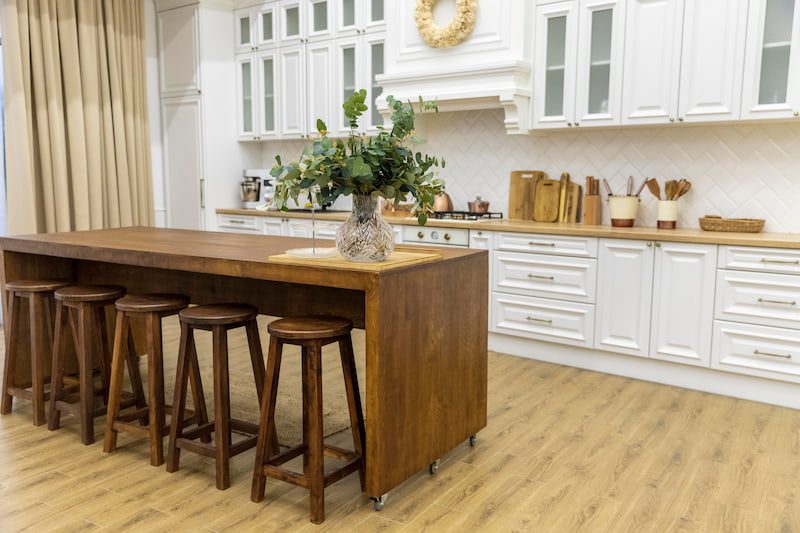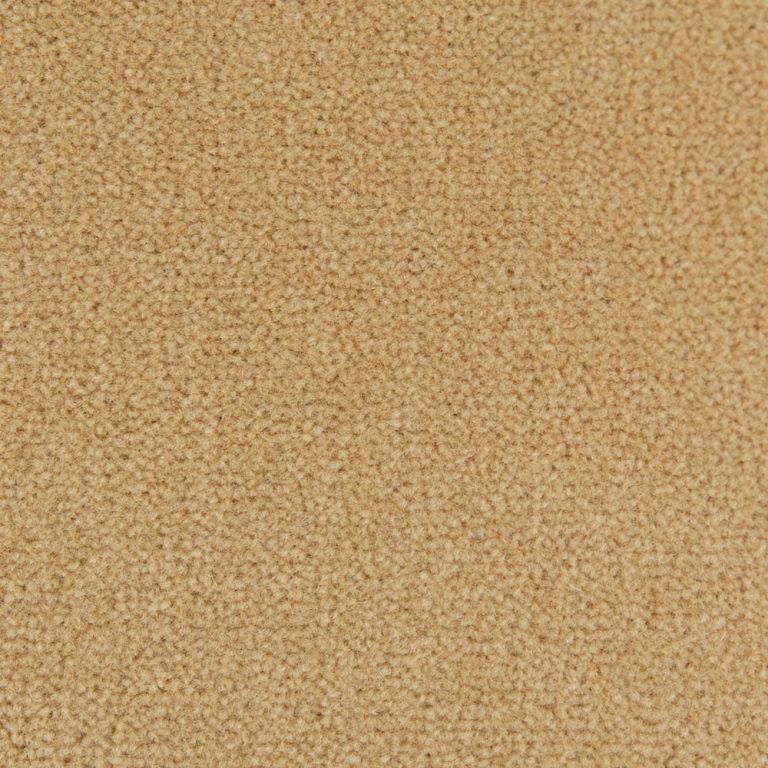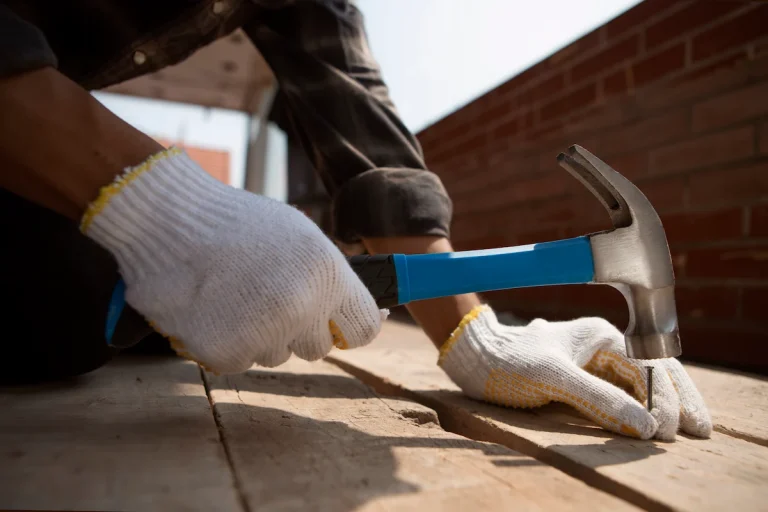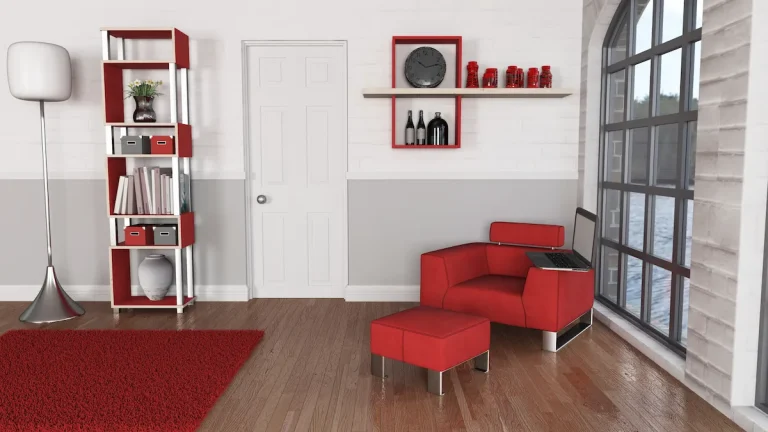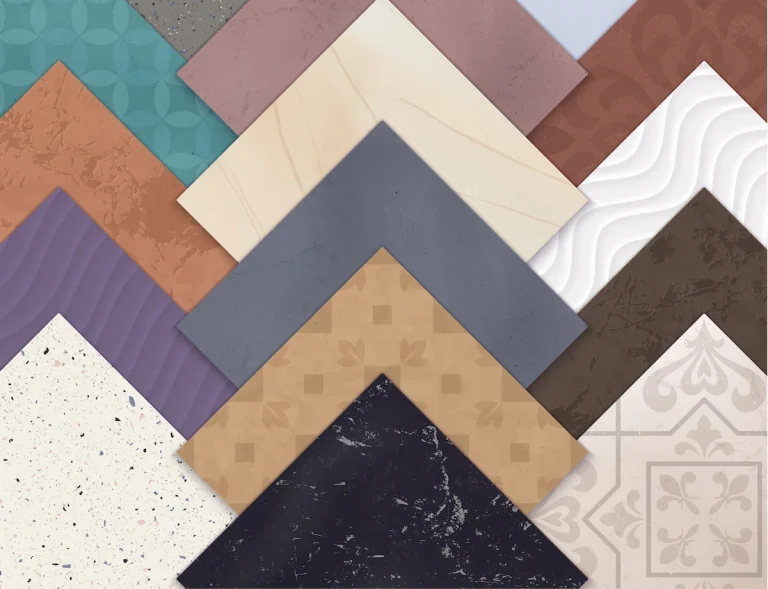When considering kitchen flooring, it is essential to prioritise both comfort and practicality. Kitchen cushion flooring presents an excellent solution, combining durable flooring with a soft, supportive surface that minimises strain on the feet during prolonged periods of standing or cooking. This type of flooring ensures safety, features an appropriate thickness, and utilises high-quality materials.
Whether undertaking a kitchen renovation or seeking to enhance comfort within the space, it is important to understand the process of selecting the flooring options that best align with one’s lifestyle and requirements.
What Is Kitchen Cushion Flooring?
Kitchen cushion flooring refers to a range of resilient flooring options specifically engineered for kitchen environments. This category includes materials such as vinyl flooring and luxury vinyl tiles, which are designed to provide both comfort and functionality. Typically, this type of flooring features a cushioned backing, enhancing comfort underfoot and minimising noise, thus making it particularly suitable for busy kitchen settings.
This flooring solution is distinguished by its durability and ease of maintenance, ensuring it can withstand the typical wear and tear associated with high-traffic cooking areas and kitchen suitability. Customers appreciate its resistance to stains and moisture, which contributes to its longevity and cleanliness in such demanding environments.
Common options available in this category include:
- Vinyl sheets: These offer a seamless installation process and provide a uniform appearance throughout the kitchen space.
- Vinyl tiles: Available in a wide array of styles, these tiles allow homeowners to easily create distinctive designs tailored to their preferences.
Kitchen cushion flooring seamlessly complements various kitchen styles, ranging from contemporary to rustic, effortlessly integrating with worktops and cabinetry. Its alignment with modern home design trends promotes a harmonious balance of aesthetics and functionality, making it an ideal choice for both new builds and renovation projects.
The Benefits of Kitchen Cushion Flooring
Kitchen cushion flooring presents numerous advantages that position it as an outstanding option for homeowners aiming to enhance their kitchen environments. Its combination of durability, water resistance, and comfort underfoot makes vinyl flooring types, such as luxury vinyl tiles and vinyl planks, both functional and aesthetically pleasing.
This flooring solution is engineered to endure the demands of kitchen use, including exposure to moisture and the impact of sharp objects, ensuring longevity and easy maintenance.
Moreover, the installation process can be customized to accommodate both DIY enthusiasts and individuals who prefer professional installation, offering design versatility and rendering it a versatile choice for any kitchen renovation initiative.
Is it OK to use vinyl flooring in kitchen?
The safety of using vinyl flooring in the kitchen is a common concern among homeowners, particularly due to the unique challenges presented by this environment, including moisture exposure and the likelihood of spills.
Fortunately, modern vinyl flooring options are designed to be both water-resistant and durable, making them suitable for kitchen settings where safety and functionality are of utmost importance.
Furthermore, installation considerations are critical in ensuring that vinyl flooring remains both safe and effective for everyday use.
The Pros and Cons of Vinyl Flooring in the Kitchen
Understanding the advantages and disadvantages of vinyl flooring in the kitchen is crucial for homeowners contemplating this popular flooring option. On one hand, vinyl flooring offers several benefits, including ease of maintenance, durability, and affordability, which contribute to its status as a preferred choice for kitchen renovations. However, it is also important to consider potential drawbacks, such as challenges in repairs and environmental concerns associated with certain vinyl products.
When assessing vinyl flooring, the advantages are particularly noteworthy. A significant benefit is its water resistance, which ensures that spills and splashes can be easily managed. This characteristic makes vinyl flooring especially suitable for kitchens, where accidents are likely to occur. Additionally, its scratch resistance renders it an excellent option for busy households with children and pets, where wear and tear are commonplace. Comfort underfoot is another critical advantage, as vinyl provides a softer surface compared to harder flooring materials such as tiles or wood, which is beneficial for individuals who stand for extended periods.
- Water-resistant, facilitating simple clean-up
- Scratch-resistant for enhanced durability
- Comfortable and gentler on the feet
Conversely, while the appeal of vinyl flooring is evident, potential drawbacks must be acknowledged. For instance, the lifespan of vinyl flooring typically falls short when compared to natural materials, often necessitating replacement after 10 to 20 years. Furthermore, certain vinyl products may pose environmental challenges due to the manufacturing processes employed and their non-biodegradable nature. Consequently, homeowners should carefully evaluate these considerations before reaching a decision.
- Shorter lifespan than natural materials
- Environmental concerns related to production
How Thick Is Cushioned Vinyl Flooring for a Kitchen?
Determining the appropriate thickness for cushioned vinyl flooring in a kitchen is essential for ensuring optimal performance and longevity. Generally, cushioned vinyl flooring is available in thicknesses ranging from 2mm to 5mm, with thicker options offering enhanced durability and comfort underfoot.
The selection of the appropriate thickness should take into account factors such as the specific kitchen environment, the installation process, and the anticipated moisture exposure. This careful consideration ensures that the flooring is suitable for daily use while maintaining its aesthetic appeal over time.
Kitchen Cushion Flooring Thickness Recommendation
The recommended thickness for kitchen cushion flooring typically ranges from 3mm to 5mm, striking an optimal balance between comfort and durability for everyday kitchen use. This range is ideal for providing sufficient cushioning while ensuring that the flooring can endure various kitchen activities, including cooking and cleaning.
A thickness of 3mm to 5mm not only enhances underfoot comfort but also significantly contributes to noise reduction, making it especially suitable for busy kitchen environments. When selecting cushioning flooring, consumers can benefit from several advantages:
- Comfort: This thickness adds a soft layer that alleviates fatigue during extended periods of standing or movement.
- Sound Absorption: Thicker flooring effectively dampens sounds, thereby creating a quieter atmosphere for cooking and entertaining.
- Durability: This thickness combines comfort with longevity, offering effective protection against wear and tear.
Common flooring types within this range include vinyl planks and rubber flooring. Consumer preferences often favour these options due to their ease of maintenance and superior performance.
The Best Type of Cushion Flooring for a Kitchen
What is the best cushion flooring for a kitchen? Selecting the most suitable type of cushion flooring for a kitchen necessitates careful consideration of various factors, including water-resistant flooring and stain-resistant properties, durability, and ease of maintenance.
Options such as luxury vinyl tiles and vinyl planks demonstrate exceptional performance in these areas, rendering them highly regarded choices for homeowners seeking flooring that can withstand the demands of a busy kitchen while preserving an attractive aesthetic.
1. Waterproof and Stain Resistant
Waterproof and stain-resistant flooring is essential for kitchens, where spills and moisture are prevalent. Vinyl flooring, particularly luxury vinyl tiles and planks, provides excellent waterproof capabilities, enabling homeowners to enjoy a worry-free cooking and dining experience.
These features are crucial not only for maintaining a clean aesthetic but also for ensuring long-term durability. Kitchen flooring frequently encounters daily challenges from food splatters, heavy foot traffic, and occasional liquid spills. Consequently, consumers are increasingly favouring materials that can withstand such wear and tear.
Among the leading choices are:
- Laminate flooring, which replicates the appearance of hardwood while offering excellent moisture resistance. It is a popular choice in the UK for its functionality.
- Porcelain tiles, recognised for their non-porous nature, making them an ideal selection for any kitchen layout.
- Natural stone options that, when properly sealed, can resist moisture and are easy to clean.
Many homeowners express a preference for products that not only meet functional requirements but also provide aesthetic appeal, seamlessly blending with modern kitchen designs. Selecting the appropriate flooring solution can significantly enhance the kitchen’s overall hygiene and facilitate ease of maintenance. Eco-friendly options are also gaining traction in the market trends.
2. Durable and Long-Lasting
Considering the flooring durability and longevity is essential when planning home improvement projects.
Durability is a critical consideration when selecting kitchen cushion flooring, as the kitchen is a high-traffic area that is subject to significant wear and tear. Flooring options such as premium vinyl tiles and planks are specifically designed to withstand heavy usage, ensuring that they remain both functional and aesthetically pleasing over time. Many brand options in the flooring industry offer products with longevity warranty for added assurance.
Investing in high-quality flooring not only enhances the visual appeal of the kitchen but also provides essential support underfoot, contributing to a more enjoyable cooking and gathering experience. When evaluating various materials for kitchen flooring, it is imperative to assess their longevity. For instance, vinyl solutions often demonstrate exceptional durability, effectively resisting scratches, stains, and moisture, in contrast to hardwood, which may warp or lose its finish over time. Products like luxury vinyl planks (LVP) and tiles (LVT) are notable for their durability and ease of maintenance, which are crucial factors for any DIY projects.
- Vinyl flooring: Durable, water-resistant, and easy to maintain.
- Tile flooring: Sturdy; however, it may be cold and hard underfoot. Options like ceramic and stone provide a hard flooring solution with great aesthetic appeal.
- Hardwood flooring: Visually appealing and warm, but prone to damage.
By prioritising flooring options that emphasise durability, homeowners can ensure a choice that will withstand the test of time while preserving its visual and functional qualities.
3. Comfortable and Easy to Stand On
Comfort is of utmost importance in kitchen flooring, particularly for individuals who spend extended periods preparing meals. Cushion flooring options offer a softer surface, which facilitates standing and reduces fatigue, thereby enhancing the overall kitchen experience. Underfloor heating can further enhance comfort levels.
When selecting the appropriate flooring, it is essential to consider not only the aesthetic appeal but also the practicality it contributes to daily tasks. Comfortable flooring can significantly enhance both cooking and cleaning routines by providing support for the feet and joints. This allows culinary enthusiasts to devote more time to crafting delightful dishes without the exhaustion typically associated with prolonged periods of standing. Pet-friendly flooring options that reduce noise and resist scratches are also highly recommended.
- Enhanced safety: Cushioned surfaces help reduce the risk of slips and falls. Flooring durability is also a key consideration in ensuring long-term safety and functionality.
- Easy maintenance: Many cushioned flooring options exhibit resistance to stains and moisture.
- Appealing design: These surfaces are available in a variety of styles and colours, enabling a seamless integration with existing décor.
Ultimately, investing in high-quality kitchen flooring prioritises comfort while also transforming the space into a warm and inviting environment, ideal for family gatherings and social events.
4. Easy to Clean and Maintain
One of the most notable advantages of kitchen cushion flooring is its ease of cleaning and maintenance. Vinyl flooring options are specifically engineered to repel stains and resist water, facilitating quick and efficient clean-up, which is essential in a high-traffic kitchen environment. Modern vinyl trends emphasize both style and practicality, making it a popular choice among homeowners.
Plus its naturally low-maintenance characteristics, the durable surface of vinyl makes it an ideal choice for individuals who prioritize hygiene in their cooking areas. When spills occur, they can be easily wiped away with a damp cloth, ensuring that the kitchen remains immaculate without requiring significant effort. For those interested in eco-friendly options, vinyl made from polyvinyl chloride (PVC) provides a balance of durability and environmental sustainability.
The following are essential cleaning recommendations:
- Regular Sweeping: Maintain cleanliness by sweeping the floor regularly to remove dirt and crumbs. Regular maintenance is crucial to extend the flooring’s lifespan.
- Use Mild Cleaners: It is advisable to utilise a pH-balanced cleaner formulated for vinyl surfaces to preserve the floor’s integrity.
- Deep Cleaning: For comprehensive cleanings, a mop with warm water and mild detergent is highly effective.
These maintenance practices not only enhance the aesthetic appeal of the kitchen but also promote overall consumer satisfaction, reinforcing the choice of vinyl as a practical and functional flooring solution.
5. Affordable and Versatile
Affordability and versatility are significant advantages of kitchen cushion flooring, making it accessible to a diverse range of homeowners. With a variety of flooring options available, including cost-effective vinyl sheets and luxury vinyl tiles, homeowners can readily identify solutions that align with their aesthetic preferences and budgetary constraints. Understanding the flooring advantages and disadvantages can help make an informed decision.
The affordability of kitchen flooring options plays a critical role in influencing consumer decisions. For budget-conscious individuals, vinyl products have become a preferred choice due to their reasonable price points and extensive design options. DIY installation of vinyl flooring is another attractive feature for those looking to save on costs.
Homeowners can select from an array of choices, including various flooring designs:
- Wood-like finishes that impart warmth, ideal for achieving a classic kitchen decor
- Stone patterns for a more refined appearance, closely resembling natural stone
- Vibrant colours and unique patterns to reflect personal style for a modern kitchen decor
The ease of DIY installation for vinyl flooring is appealing to many, as it allows for savings on labour costs. Alternatively, those desiring a professional finish may opt to hire experts, ensuring a flawless result and durability in high-traffic areas such as the kitchen. However, be aware of potential repair challenges that may arise with DIY projects.
Ultimately, the combination of affordability and versatility in flooring options give the power to homeowners to construct their ideal kitchens without exceeding their financial limits.
The Different Types of Kitchen Cushion Flooring
A variety of kitchen cushion flooring options are available, each providing distinct features and benefits tailored to different preferences and requirements. The selection includes vinyl flooring, which encompasses luxury vinyl tiles and planks, as well as alternative materials such as cork, rubber, foam, and linoleum. DIY projects for these materials have become increasingly popular in the home improvement sector.
Each flooring type addresses specific needs related to comfort, durability, and maintenance, making them suitable for various kitchen decor styles.
a. Vinyl Cushion Flooring
Vinyl cushion flooring has become a preferred option among homeowners owing to its blend of aesthetic appeal, durability, and comfort. Available in various formats, including luxury vinyl tiles and vinyl sheets, this type of flooring facilitates easy installation and maintenance, making it particularly suitable for kitchen environments. Vinyl flooring trends show a growing demand for realistic wood and stone looks.
A significant advantage of this flooring solution is its design versatility, enabling seamless integration into a wide range of kitchen styles—from modern and sleek to rustic and traditional. Homeowners value the ability of vinyl cushion flooring to emulate more expensive materials, providing the appearance of hardwood or stone without the substantial cost. The extensive selection of colours, patterns, and textures available ensures that individual tastes and kitchen aesthetics can be effortlessly matched. Popular brands like Quick-Step offer a variety of designs to meet diverse tastes.
- Easy installation: Most vinyl flooring options are designed for straightforward DIY installation, contributing to savings on labour costs.
- Comfort: The cushioned quality of this flooring offers a soft, warm surface underfoot, which is particularly advantageous in high-traffic kitchen areas.
- Durability: Vinyl flooring is resistant to moisture and stains, making it a practical choice that withstands heavy foot traffic.
Given these attributes, it is evident why an increasing number of homeowners are choosing vinyl cushion flooring to enhance both the beauty and functionality of their kitchens. Proper cleaning tips and regular maintenance further extend the lifespan of these floors.
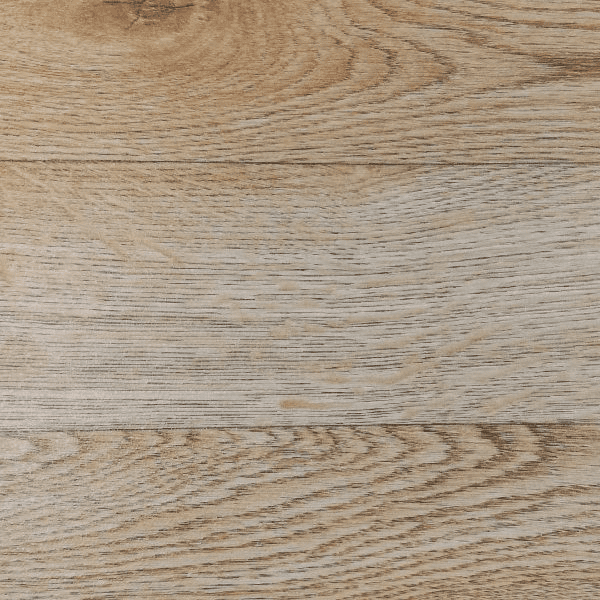
See product: Amor Algarve
b. Cork Cushion Flooring
Cork cushion flooring represents an eco-friendly option crafted from natural materials, delivering both comfort and sustainability in kitchen applications. Its soft surface enhances the standing experience, while its inherent properties provide benefits such as noise reduction and insulation. This aligns well with the growing emphasis on environmental sustainability in home improvement.
This innovative flooring solution is not only environmentally sustainable, but it also exhibits hypoallergenic qualities, making it a suitable choice for households that are sensitive to allergens. In terms of performance within kitchen settings, cork cushion flooring demonstrates exceptional durability and moisture resistance, distinguishing it from vinyl alternatives. While vinyl may have repair challenges, cork offers an easier maintenance solution.
- Cork does not readily retain dirt or stains, facilitating straightforward cleaning through simple mopping or occasional deep cleaning.
- In contrast, vinyl can harbour bacteria and generally requires more intensive maintenance to maintain its appearance.
Consequently, opting for cork flooring can yield significant long-term benefits, both aesthetically and functionally, thereby ensuring a healthy, clean, and comfortable kitchen environment.
c. Rubber Cushion Flooring
Rubber cushion flooring is widely recognised for its slip-resistant properties, making it an exceptional choice for kitchens where spills are common. Plus its durability, rubber flooring options provide easy maintenance and a diverse array of colour selections to complement kitchen decor. They are also a part of the pet-friendly flooring options, ideal for households with animals.
This material not only provides cushioning for footsteps, offering comfort during prolonged periods of standing, but it also effectively reduces the risk of falls, which is a significant concern within residential environments. Its resilience ensures that it can endure the heavy foot traffic typically found in family kitchens, rendering it a long-lasting investment.
- Safety Features: The anti-slip surface is particularly advantageous during cooking or cleaning, where moisture can accumulate.
- Durability: Rubber is engineered to resist dents, scratches, and stains, thereby maintaining its appearance even in bustling environments.
- Low Maintenance: Basic cleaning routines are sufficient to preserve the flooring’s fresh appearance, highlighting the importance of consistent flooring maintenance.
- Design Versatility: A wide range of colours and finishes facilitates seamless integration into various kitchen styles, from modern to traditional.
Rubber cushion flooring effectively combines functionality with aesthetic appeal, making it a prudent choice for homeowners aiming to enhance both safety and style in their kitchens.
d. Foam Cushion Flooring
This category features several DIY installation options, making it a popular choice for homeowners undertaking DIY projects.
Foam cushion flooring presents a versatile solution that provides exceptional comfort and straightforward installation, rendering it a preferred choice among homeowners. Its lightweight composition facilitates simple do-it-yourself projects, while its cushioning properties offer remarkable sound absorption, particularly beneficial in busy kitchen environments.
The advantages of foam cushion flooring extend beyond mere comfort; it significantly contributes to enhancing a home’s ambience through its sound-dampening features. This type of flooring enables occupants to enjoy a quieter atmosphere, effectively minimising distractions such as the noise of clattering dishes and children’s footsteps.
Moreover, foam cushion flooring is available in a wide array of colours and patterns, allowing homeowners to tailor their spaces to reflect their individual style preferences.
The installation process is uncomplicated—one can simply roll out the material and secure it with adhesive or adhesive-backed pads to achieve a seamless appearance. Maintenance is minimal; routine sweeping and occasional mopping are generally sufficient to maintain its fresh appearance.
Due to its unique characteristics, foam cushion flooring is particularly suitable for kitchens, where its resilience against spills and comfort underfoot can significantly enhance the cooking experience. It is also an excellent choice for play areas and home gyms, providing a safe and cushioned surface for various activities.
e. Linoleum Cushion Flooring
Linoleum cushion flooring represents a resilient and sustainable flooring option composed of natural materials, making it an ideal choice for kitchens. Renowned for its durability and ease of maintenance, linoleum provides a warm aesthetic that harmonises with a variety of kitchen designs.
Plus its attractive appearance, linoleum cushion flooring is manufactured from renewable resources including linseed oil, cork dust, and wood flour, rendering it an exceptional option for environmentally conscious consumers. This flooring not only contributes to the reduction of carbon footprints but also offers a diverse range of colours and patterns, enabling homeowners to express their unique styles while prioritising sustainability.
When compared to traditional flooring alternatives such as vinyl or laminate, linoleum is distinguished by its biodegradable properties and absence of harmful chemicals. Key benefits include:
- Eco-friendly production practices
- Resistance to wear and tear
- Excellent insulation properties
As consumers increasingly seek flooring solutions that align with their values, linoleum emerges as a compelling alternative that satisfies both aesthetic preferences and environmental responsibilities.
How to Choose the Right Kitchen Cushion Flooring for Your Home
Selecting the appropriate kitchen cushion flooring for one’s home necessitates a thorough evaluation of factors such as budget, lifestyle requirements, and aesthetic preferences.
By assessing different flooring options and understanding their respective advantages, homeowners can make informed choices that enhance both the functionality and visual appeal of their kitchen environments.
1. Consider Your Budget
When selecting kitchen cushion flooring, it is imperative to consider your budget as a crucial first step in the decision-making process. A variety of options are available at different price points, enabling homeowners to identify affordable solutions that align with their quality and design requirements.
To effectively assess budgetary constraints, it is essential to evaluate not only the initial costs but also the long-term investment value of each flooring option. Begin by compiling a list of essential features and optional elements, which can assist in narrowing down choices in a meaningful way.
- Explore materials that provide durability and lower maintenance costs over time, such as options offered by brands like Quick-Step.
- Consider the possibility of DIY installations, which could significantly reduce expenses related to labour.
Ultimately, achieving a balance between affordability and quality can lead to a kitchen flooring solution that is both satisfying and practical, enhancing the space’s aesthetics and functionality. However, it is important to consider potential flooring disadvantages to make an informed decision.
2. Think About Your Lifestyle and Needs
The right flooring, such as LVP or LVT, can cater to various lifestyle requirements.
When selecting kitchen cushion flooring, it is essential to consider your lifestyle and needs, as various materials and designs can significantly influence daily use. For example, families with pets may prioritise flooring options that are scratch-resistant and easy to clean, while individuals who enjoy cooking might seek durable surfaces capable of withstanding moisture exposure.
In evaluating your choices, it is crucial to reflect on the frequency of kitchen use and the types of activities occurring in this space.
- Active families may find resilient laminate or vinyl beneficial, as these materials not only endure daily wear and tear but also provide a comfortable surface for standing during extended periods of cooking or entertaining.
- Conversely, culinary enthusiasts, who frequently manage hot pots and spills, might prefer stone or tiles to ensure durability against heat and water.
- Families with young children may opt for softer options like cork or padded vinyl, which offer a cushioning effect for children who spend significant time playing on the floor.
By carefully considering these factors, one can select a flooring solution that aligns seamlessly with their lifestyle while also addressing maintenance requirements and aesthetic appeal.
3. Check for Durability and Warranty
When selecting kitchen cushion flooring, it is essential to evaluate its durability and warranty, ensuring that the flooring can endure the demands of a high-traffic kitchen environment. Consider options like vinyl flooring, which are popular in the UK for their robust construction. A robust warranty typically reflects the manufacturer’s assurance regarding the product’s longevity and performance over time.
Investing in durable flooring is critical for preserving both the aesthetic and functional quality of the kitchen, often regarded as the heart of the home. Kitchen flooring is exposed to significant foot traffic, spills, and the occasional sharp object, making durability a paramount consideration.
Durability not only reduces the frequency of replacements but also contributes to overall satisfaction. When durability is complemented by a comprehensive warranty, homeowners can enjoy peace of mind, knowing that their flooring selections are safeguarded against unforeseen wear and tear.
- Thoughtful maintenance practices can substantially impact the longevity of the flooring.
- Regular cleaning and prompt attention to spills can prevent stains and damage, thus extending its lifespan.
- Ultimately, making the right flooring choice results in fewer complications and enhances the overall aesthetics of the kitchen.
4. Look for Easy Installation and Maintenance
When selecting kitchen cushion flooring, prioritising ease of installation and maintenance is essential, as these factors can significantly impact the overall user experience. Many homeowners favour flooring options that facilitate do-it-yourself projects, while others may choose professional installation to achieve a more refined and seamless result.
In terms of material selection, options such as vinyl tiles and laminate are particularly attractive due to their user-friendly characteristics. These products can be installed without requiring advanced skills, making them ideal for individuals who prefer a hands-on approach to home improvement.
In contrast, more complex materials, such as solid hardwood or intricate tile designs, typically require professional expertise, which can extend installation time and increase associated costs—factors that SPC core flooring can help mitigate. This is where the advantages of low-maintenance flooring solutions become apparent, as they not only streamline the installation process but also reduce the level of upkeep needed over time.
- DIY-friendly products often include clear, easy-to-follow instructions, making them ideal for DIY installation projects and allowing homeowners to experience a sense of accomplishment.
- While professional installations may yield a polished finish, opting for DIY projects can offer flexibility, though they frequently involve ongoing maintenance considerations.
- Low-maintenance options, such as vinyl flooring and LVT, significantly lessen cleaning efforts, making them a practical choice for busy families.
5. Consider the Aesthetics and Design Options
When selecting kitchen cushion flooring, it is essential to consider the aesthetics and design options available, as these elements significantly impact the overall appearance and atmosphere of the space. Options like LVP with an SPC core can offer enhanced durability and design versatility.
A wide range of flooring options, from modern to traditional styles, can effectively complement various kitchen décors. Incorporating aspects such as colour, texture, and pattern into kitchen flooring can substantially transform the ambiance, contributing to either a welcoming or sophisticated environment. For example, light-coloured vinyl can enhance the brightness of a compact cooking area, while dark tiles can impart an elegant feel to larger spaces.
- Colour: Soft pastels are currently on-trend, attracting those who prefer a fresh and airy design, whereas bold hues can create a striking statement in contemporary settings.
- Texture: Textured surfaces add depth and interest, with wood-look options gaining popularity for their versatility in harmonising with both rustic and minimalist schemes.
- Pattern: Geometric designs, including chevrons and hexagons, are increasingly preferred for their modern appeal, fostering creativity in kitchen aesthetics.
By carefully selecting kitchen flooring that embodies these trends, homeowners can create a dynamic space that not only reflects their personal style but also enhances the functionality of the kitchen.
Kitchen cushion flooring is the perfect blend of style, comfort, and durability. Whether you’re looking for a soft, slip-resistant surface or an easy-to-clean option for a busy home, cushion flooring provides the ideal solution. With a variety of designs to match any kitchen aesthetic, it’s a practical and stylish choice.
At TEKA Flooring, we offer high-quality kitchen cushion flooring that enhances your space while providing long-lasting comfort underfoot. Our expert team is ready to help you find the perfect flooring and provide professional fitting services for a seamless finish.
Transform your kitchen today with TEKA Flooring – where comfort meets style. Contact us now to explore our collection and get expert advice!
Read also:



















